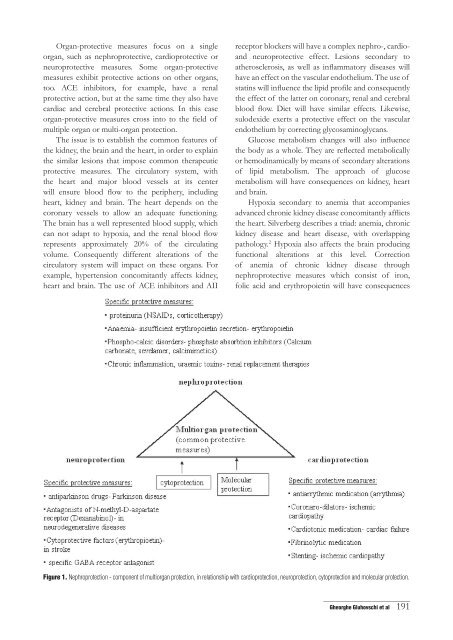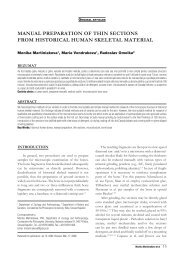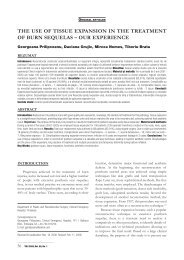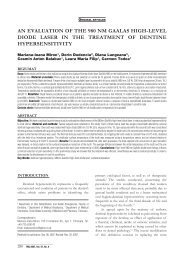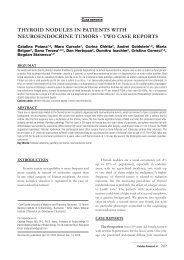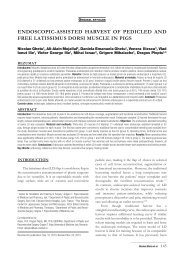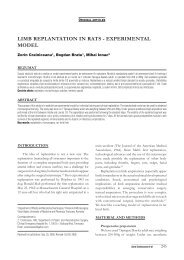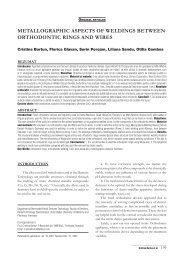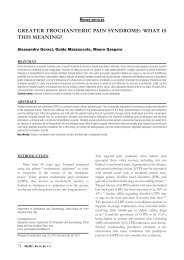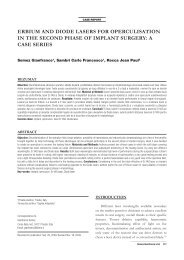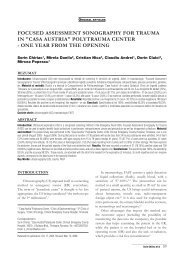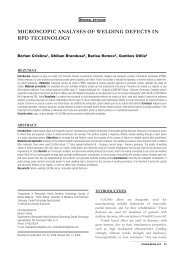nEPHroProtEction, Part oF MULti-orGan ProtEction
nEPHroProtEction, Part oF MULti-orGan ProtEction
nEPHroProtEction, Part oF MULti-orGan ProtEction
You also want an ePaper? Increase the reach of your titles
YUMPU automatically turns print PDFs into web optimized ePapers that Google loves.
Organ-protective measures focus on a single<br />
organ, such as nephroprotective, cardioprotective or<br />
neuroprotective measures. Some organ-protective<br />
measures exhibit protective actions on other organs,<br />
too. ACE inhibitors, for example, have a renal<br />
protective action, but at the same time they also have<br />
cardiac and cerebral protective actions. In this case<br />
organ-protective measures cross into to the field of<br />
multiple organ or multi-organ protection.<br />
The issue is to establish the common features of<br />
the kidney, the brain and the heart, in order to explain<br />
the similar lesions that impose common therapeutic<br />
protective measures. The circulatory system, with<br />
the heart and major blood vessels at its center<br />
will ensure blood flow to the periphery, including<br />
heart, kidney and brain. The heart depends on the<br />
coronary vessels to allow an adequate functioning.<br />
The brain has a well represented blood supply, which<br />
can not adapt to hypoxia, and the renal blood flow<br />
represents approximately 20% of the circulating<br />
volume. Consequently different alterations of the<br />
circulatory system will impact on these organs. For<br />
example, hypertension concomitantly affects kidney,<br />
heart and brain. The use of ACE inhibitors and AII<br />
receptor blockers will have a complex nephro-, cardio-<br />
and neuroprotective effect. Lesions secondary to<br />
atherosclerosis, as well as inflammatory diseases will<br />
have an effect on the vascular endothelium. The use of<br />
statins will influence the lipid profile and consequently<br />
the effect of the latter on coronary, renal and cerebral<br />
blood flow. Diet will have similar effects. Likewise,<br />
sulodexide exerts a protective effect on the vascular<br />
endothelium by correcting glycosaminoglycans.<br />
Glucose metabolism changes will also influence<br />
the body as a whole. They are reflected metabolically<br />
or hemodinamically by means of secondary alterations<br />
of lipid metabolism. The approach of glucose<br />
metabolism will have consequences on kidney, heart<br />
and brain.<br />
Hypoxia secondary to anemia that accompanies<br />
advanced chronic kidney disease concomitantly afflicts<br />
the heart. Silverberg describes a triad: anemia, chronic<br />
kidney disease and heart disease, with overlapping<br />
pathology. 2 Hypoxia also affects the brain producing<br />
functional alterations at this level. Correction<br />
of anemia of chronic kidney disease through<br />
nephroprotective measures which consist of iron,<br />
folic acid and erythropoietin will have consequences<br />
Figure 1. Nephroprotection - component of multiorgan protection, in relationship with cardioprotection, neuroprotection, cytoprotection and molecular protection.<br />
_____________________________<br />
Gheorghe Gluhovschi et al 191


